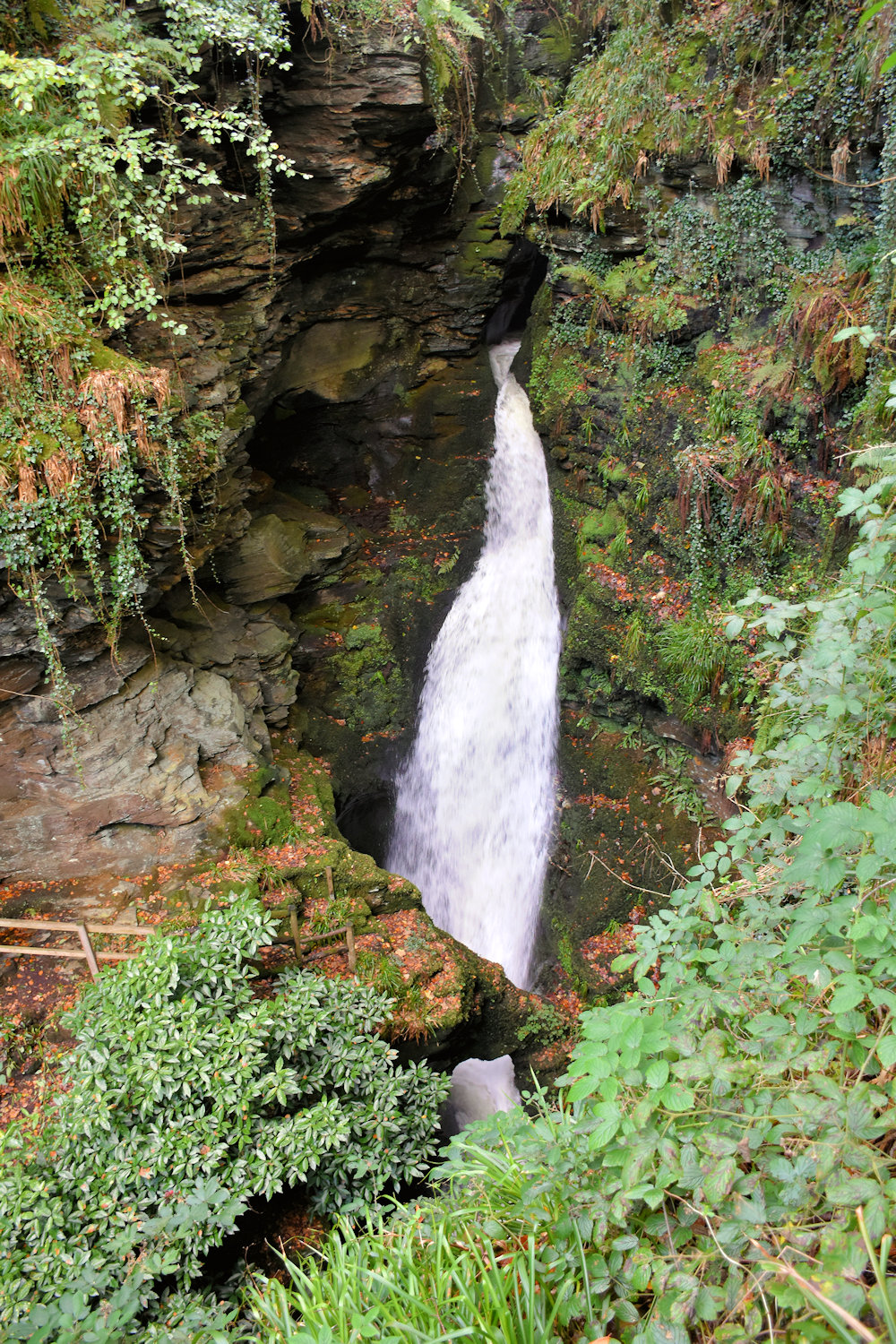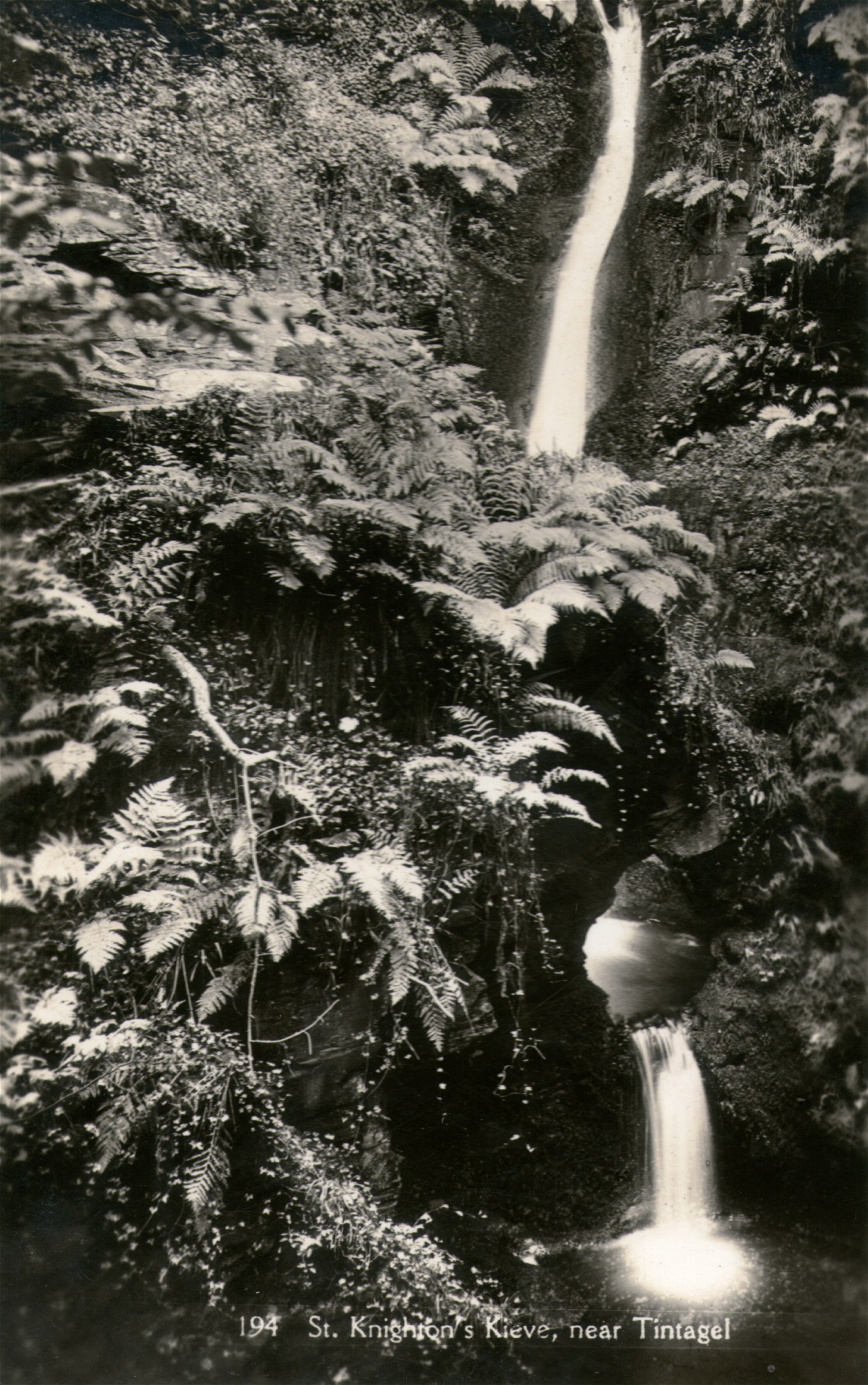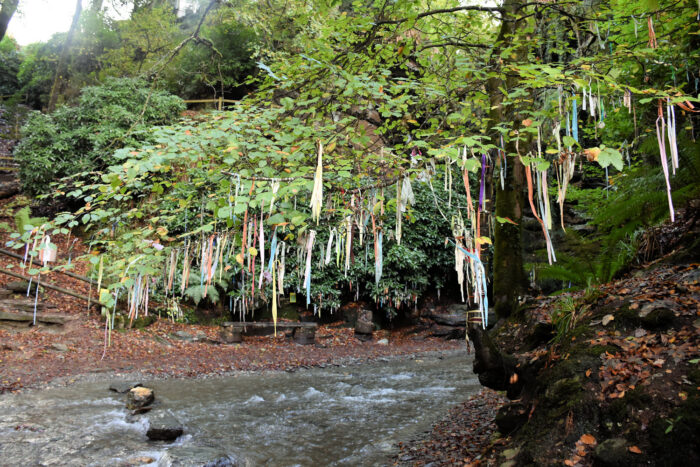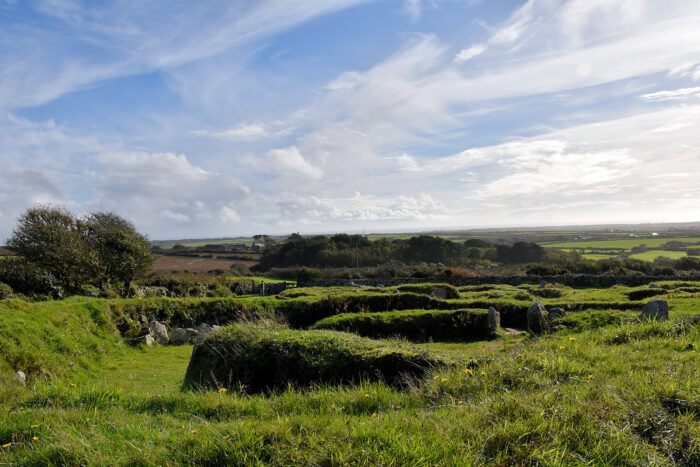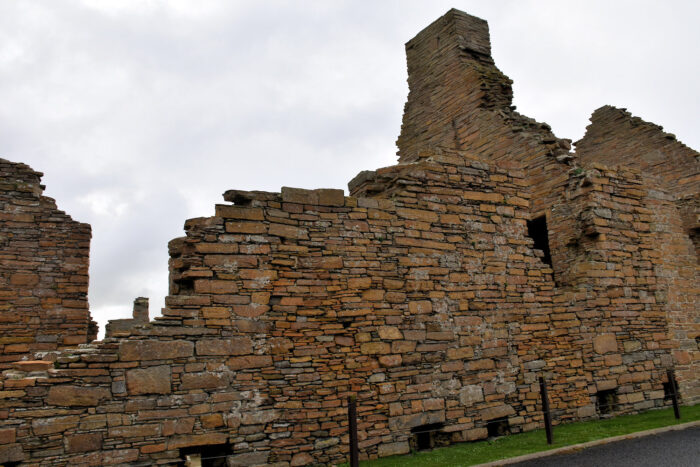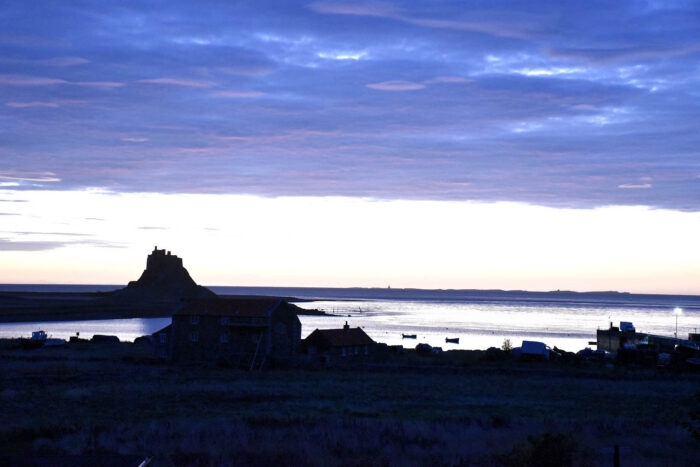St Nectan’s kieve is revered as a sacred place, where numerous ribbons, crystals, photographs, inscriptions, prayers and other devotions now adorn the foliage and rock walls near the waterfall. You will even find a number of small stacks of flat stones, known as Faerie Stacks, constructed from stones collected from the waters by visitors, marking a special thought or moment in time during their visit, or to commemorate memories and loved ones. . . . It is believed that a building (known as the Hermitage) located at the top of the waterfall belonged to the sixth-century Saint Nectan. The date of the building is uncertain but according to legend, Saint Nectan rang a silver bell in times of stormy weather to warn passing ships of the perils of the rocks at the mouth of Rocky Valley. It is also understood that the ruins of a Christian chapel provide the lower part of the walls of a cottage erected in the 1860s, and extended around 1900.
St Nectan’s Glen
The idea that the sixth-century Saint Nectan had his hermitage above the waterfall is myth. According to legend, Nectan rang a silver bell in times of stormy weather to warn shipping of the perils of the rocks at the mouth of the Rocky Valley. Though other legends are also told of Nectan (such as his burial under the riverbed), no evidence exists to substantiate Nectan’s presence here. His home was further north, in what is now Hartland, Devon. The name is first recorded in 1799 as Nathan’s Cave in reference to a local character, either Nathan Williams or Nathan Cock, and the Cornish word Cuva (pronounced keeva) meaning tub.
The legend connecting St Nectan to the falls is the romantic whimsy of the nineteenth century clergyman, Reverend Robert Stephen Hawker who first attributed the falls to the saint in his poem, The Sisters of the Glen in 1846. The “hermitage” written about by Hawker and others was a simple summerhouse and had no connection to any saint. Many of the site’s legends are the result of Hawker’s poetry and the vivid imagination of nineteenth century Trethevy farmer, William Goard who led tour parties to the falls.
Wikipedia.
